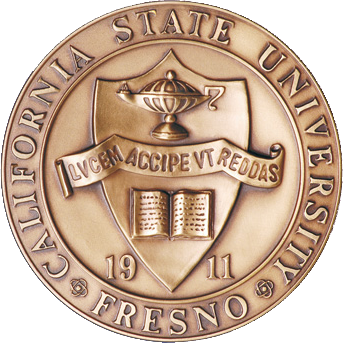Research Activities
What does "strong electron correlation" mean?
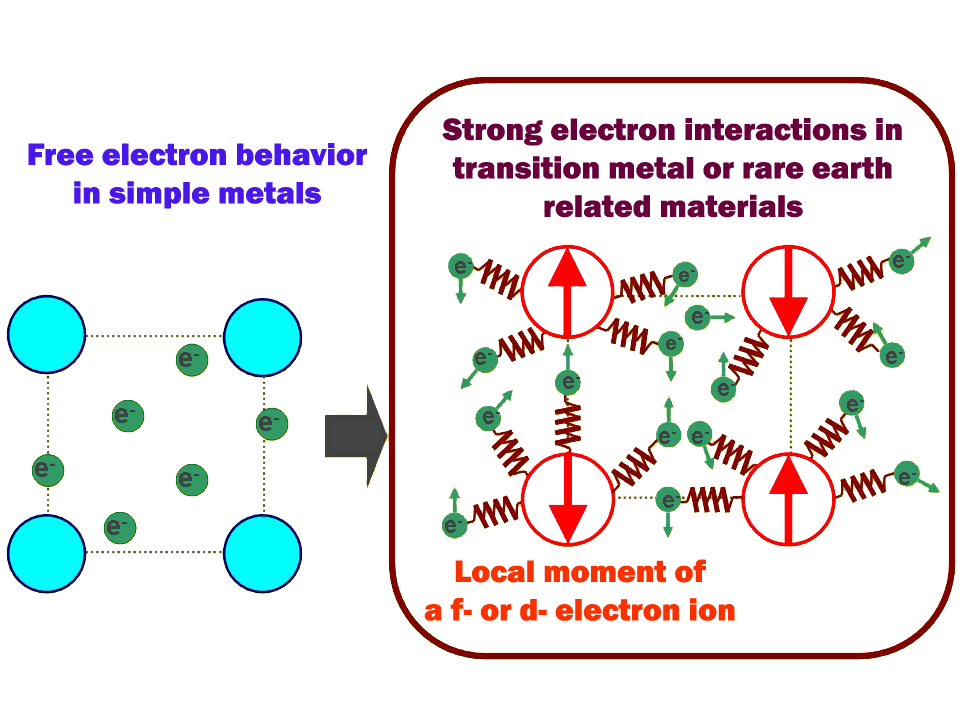
When the conduction electrons in the periodic crystalline of a simple metal, the interaction is so weak that they act like independent entities and move freely (ideal-gas-particle behavior, i.e., Fermi-Liquid Model). But in the strongly correlated electron materials, which usually consist of transition metal or rare earth ions containing d- or f- electrons, the electron-electron interaction is so strong that the ideal-gas-particle behavior falls apart. Sometime the strong interaction can modify the effective mass of a conduction electron to reach as high as 1000 times of a bare electron mass.
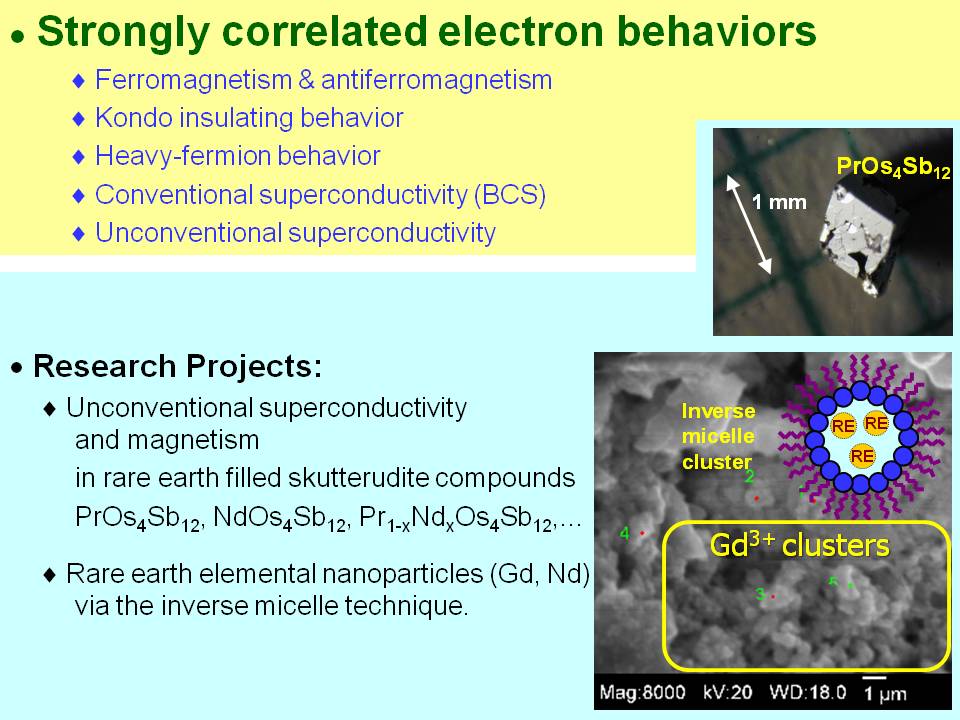
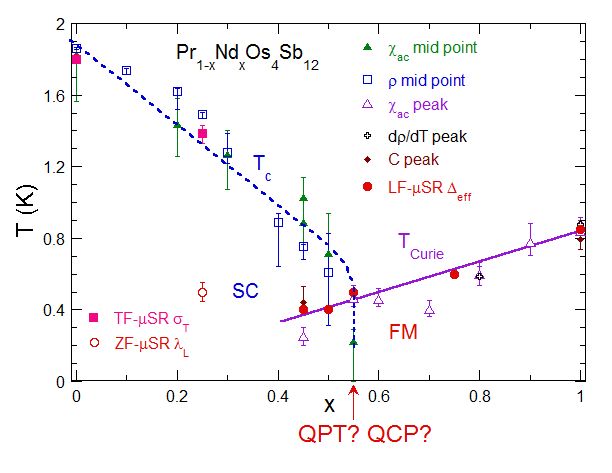
[REF] Physical Review B 83, 024511 (2011) & Physical Review B 89, 235111 (2014)
The competition and coexistence of the superconducting (SC) and ferromagnetic (FM) states in
Pr1-xNdxOs4Sb12 open the possibility of existence of
a FM quantum critical point in this system.
From the muon spin rotation/relaxation measurements, we have learned:
(1) reduced and strongly disordered static magnetic fields below ferromagnetic transition temperature at
positive-muon (μ+) stopping sites in the alloys, (2) the absence of any static Nd magnetism,
ordered or disordered, for x = 0.25 above 25 mK, and
(3) microscopic-scale coexistence of superconductivity and magnetism for 0.25≤x≤
0.55.
The μ+ Knight shifts in substituted alloys also indicate a reduction of the coupling strength between
μ+ spins and 4f paramagnetism for temperatures below 15 K. Itinerant Pr3+
electrical quadrupolar excitations, which is invoked to mediate the superconducting Cooper-pair interaction,
is speculated to modify the μ+-4f ion indirect spin-spin interaction.
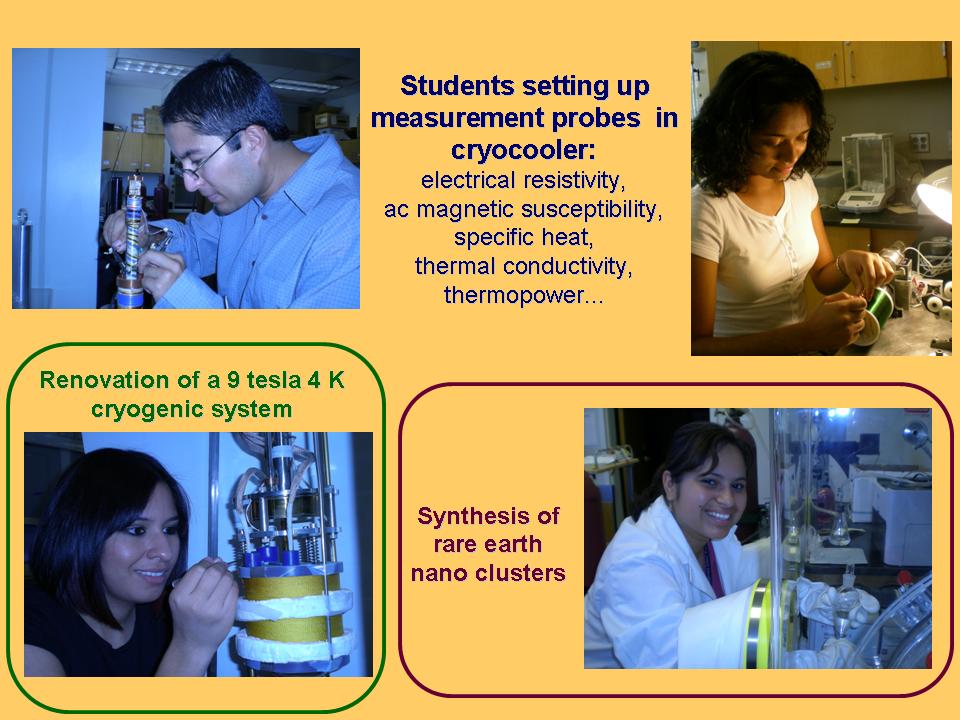
All instrumentation for measurement at the Strongly Correlated Electron Laboratory are designed and built by students under the guidance and assistance of Dr. Ho.
